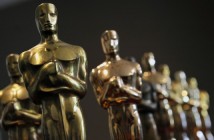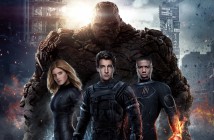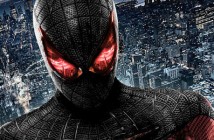Editor’s Note: Projecting features a selection of great film and television focused writing from around the internet.
Bryan Curtis basks in the revelations provided by Steven Soderbergh’s black-and-white edit of Raiders of the Lost Ark, for Grantland:
For instance, fast-forward to the scene (around 19:20) in which Indy explains the power of the Ark to two Army intelligence officers. Under normal viewing, the scene is pure exposition, the setup for the Map Room visit and the power-of-God payoff. But without colors and dialogue, you notice new stuff. The long shadows that fall across the blackboard. The framing of the fat Army man’s face. Denholm Elliott’s creepy, Hammer Horror smile — a little dash of Peter Cushing, and a preview of the smile that would cross the face of the Nazi torturer Toht. I’d watched that scene over and over and I’d never appreciated its spookiness.
Ethan Alter considers the relevancy of cable drama after-shows, for Indiewire:
With its roster of celebrity guest stars, emphasis on audience interactivity and hyper-awereness of social media, “Watch What Happens” provides a clear template for “Talking Dead” and its ilk, all of which follow the same basic format even if the series they’re connected to can differ wildly in terms of tone and genre. A genial, geeky host sits opposite one or more members of the show’s creative team (and maybe a celebrity guest, who isn’t connected with the series apart from claiming to be a fan) and raves about what we all just saw, pausing occasionally to ask a softball question.
Rebecca Pahle expresses her frustration over the ubiquitous television antihero, for Pajiba:
I’m not saying all characters should be fluffy bunnies with nary a flaw, and there’s value in a show displaying shitteous behavior and pointing it out as such (though Vikings never did get around to even acknowledging that this guy they’re given a woobie plotline to is an actual rapist, and I’m not convinced that The Knick condemns Thackery’s racism so much as it shrugs and looks the other way), but it feels gross when shows like The Knick and Vikings ask us to sympathize with characters who engage in behaviors that hurt a hell of a lot of people outside the world of fiction.
Matt Brown looks at Gotham and exactly why prequels don’t work, for Twitch:
It’s been outlined before, yet bears repeating: the problem with any prequel story is that it is, by definition, not the story.
It’s the backstory, and when George Lucas developed his Star Wars movies and stuck that ignominious “Episode IV” in front of that equally ignominious “A New Hope” when he re-released Star Wars in 1979, he wasn’t just soldering a new step onto his ladder to franchise wealth by which the entire Hollywood enterprise would be defined for the next 30 years; he was, rather gracelessly, implying that backstory had relevance and weight equal to that of story, itself.




